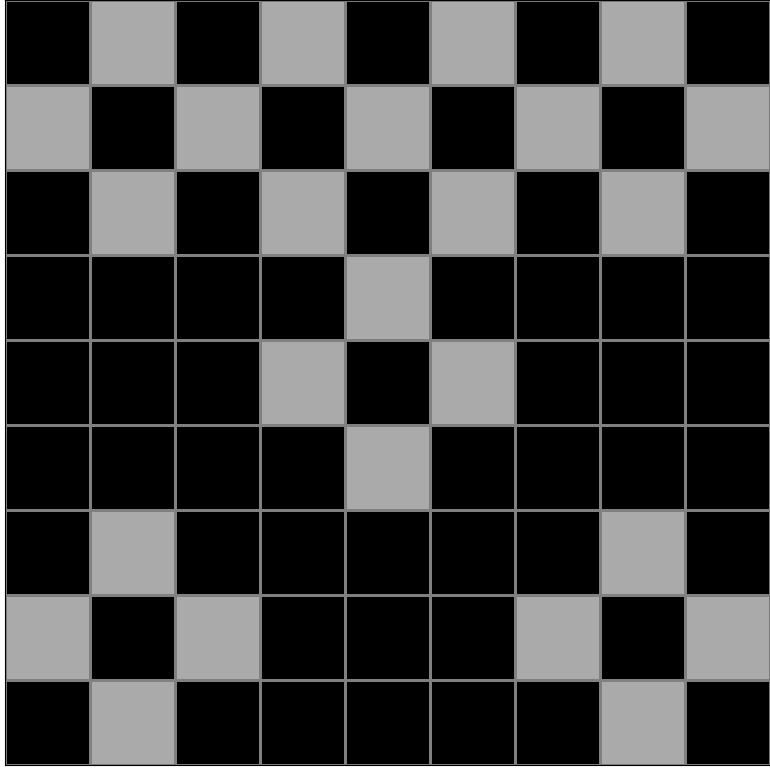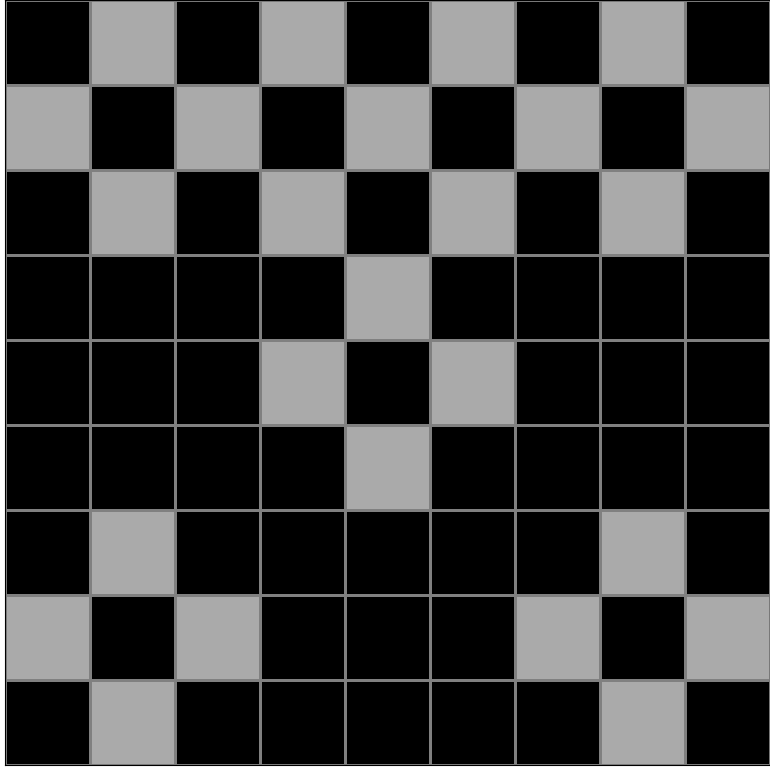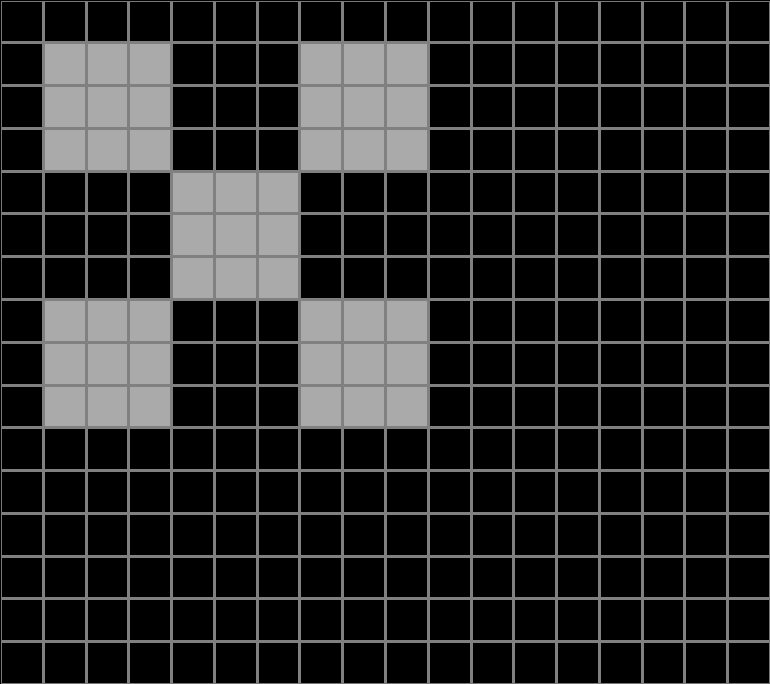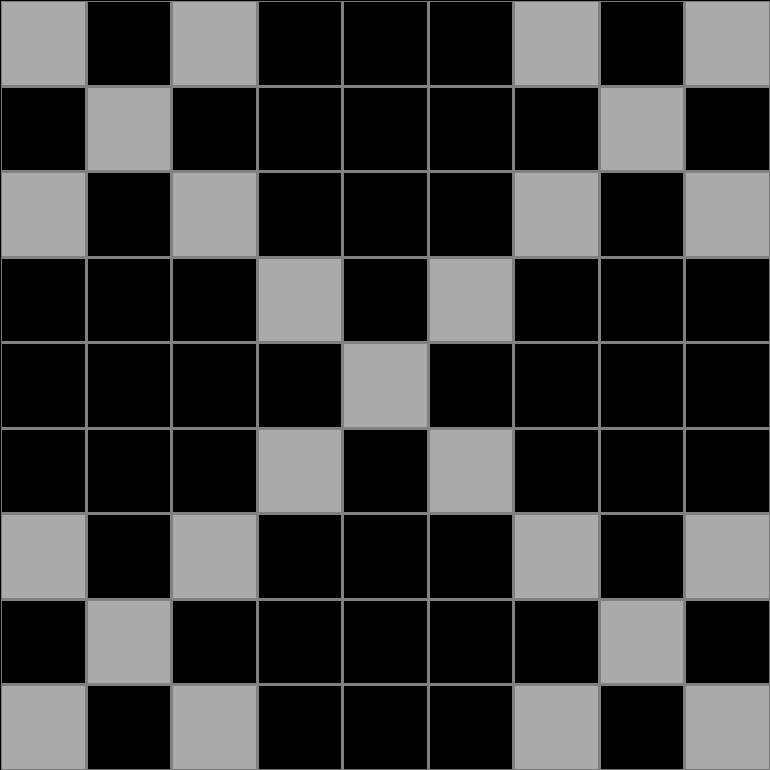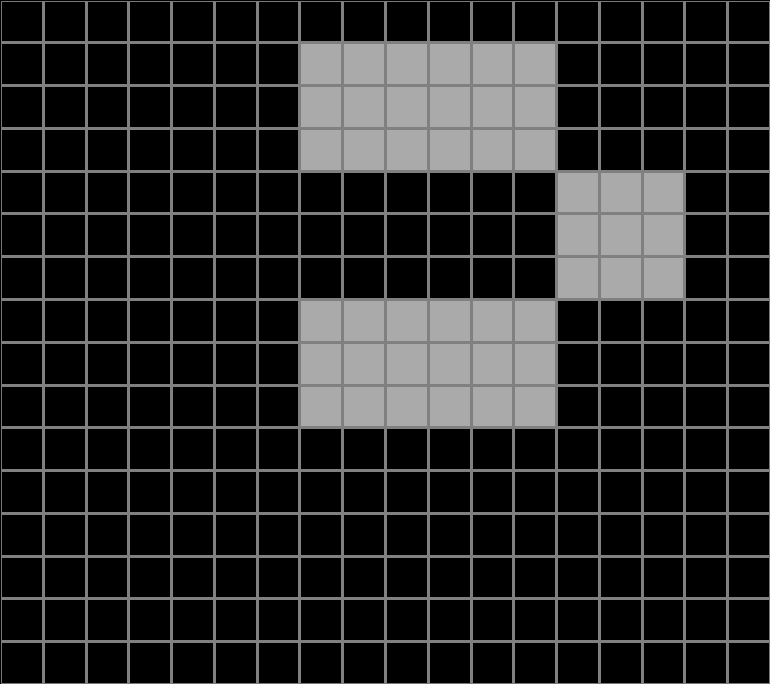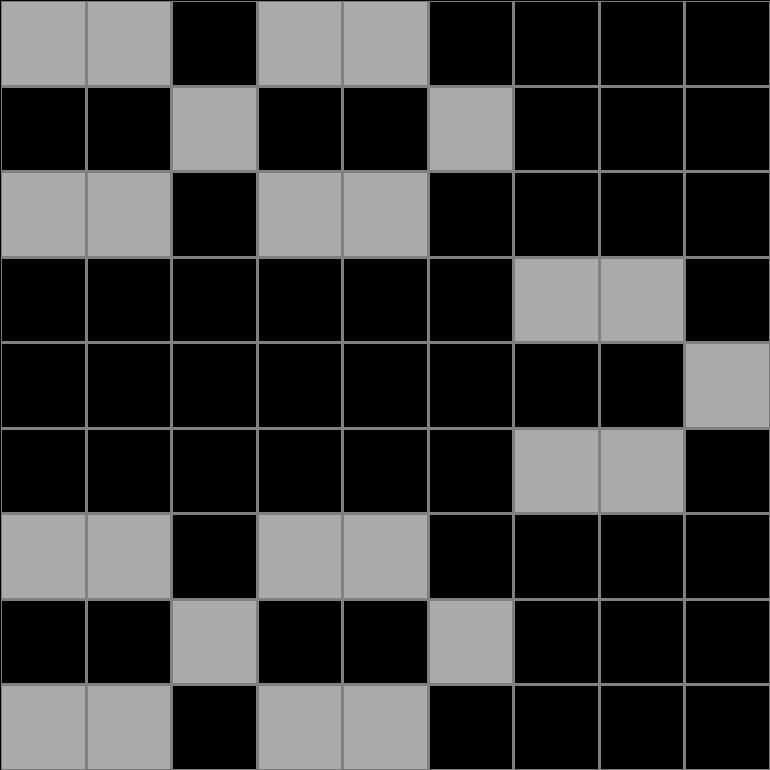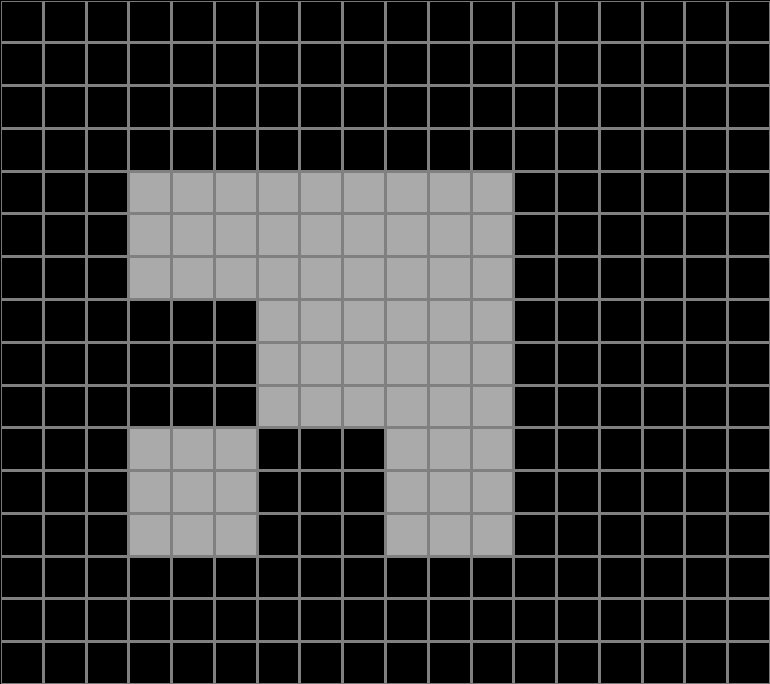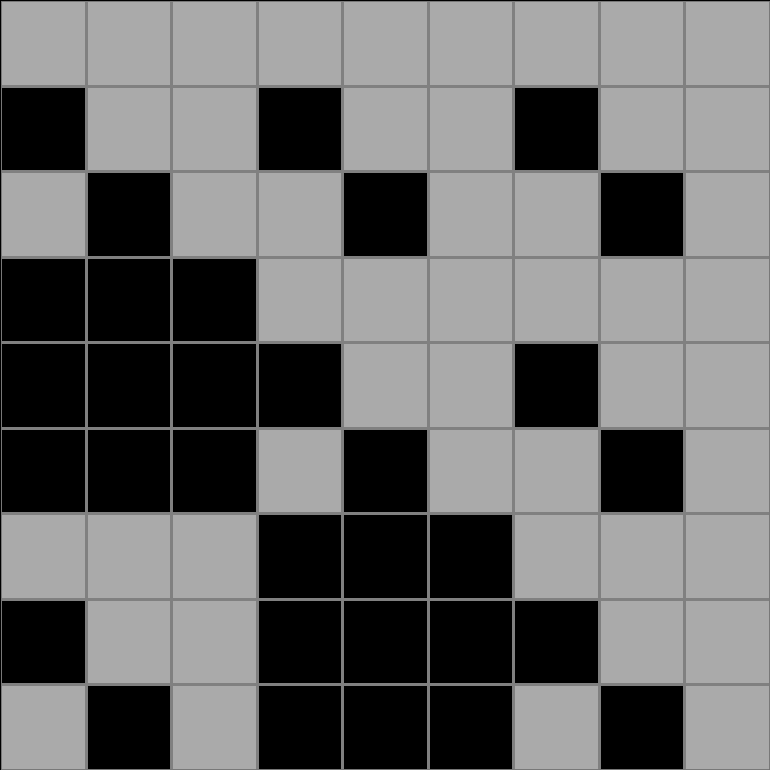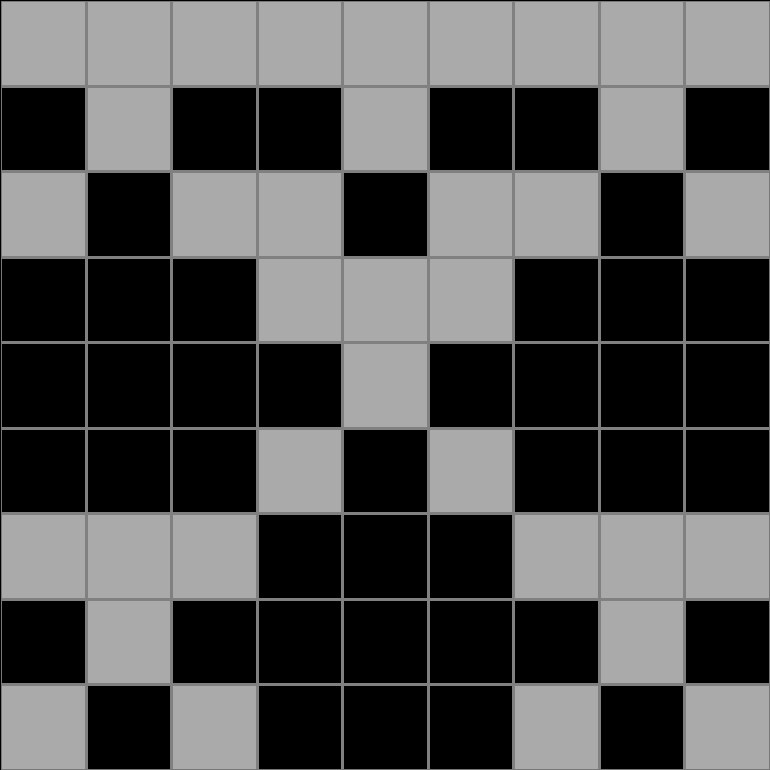Participant 1
Initial description: The output has an area of 9x9. Replicate the grey block pattern in the input so that it fills up the output. The grey block output pattern should be able to be decomposed into smaller single pixel replicas of itself.
Final description: The output has an area of 9x9. Replicate the grey block pattern in the input so that it fills up the output. The grey block output pattern should be able to be decomposed into smaller single pixel replicas of itself.

Participant 2
Initial description: Make the canvas the size of the gray pattern and reproduce the gray pattern but leave the squares black that correspond to the pattern so it looks like every 3x3 section is a miniature version of the large pattern
Final description: Make the canvas the size of the gray pattern and reproduce the gray pattern but leave the squares black that correspond to the pattern so it looks like every 3x3 section is a miniature version of the large pattern
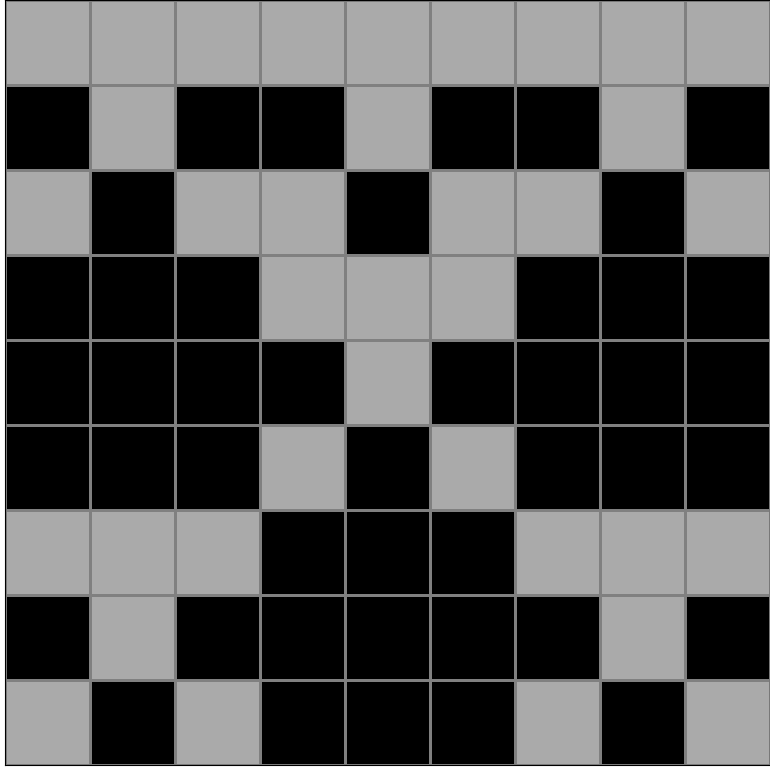
Participant 3
Initial description: Fill the resized grid (9X9) with the object in the input as much as possible.
Final description: I don't know what the rule was. I thought I did but I couldn't make it work (fit the pattern as many times as possible). I don't understand this one.

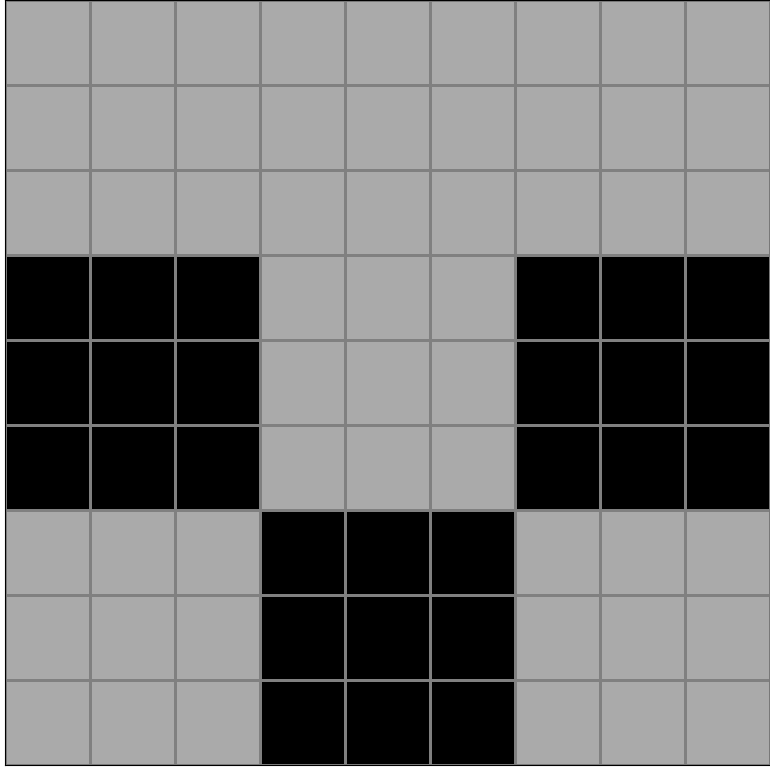

Participant 4
Initial description: I saw the example output and done like that
Final description: I saw the example output and done like that
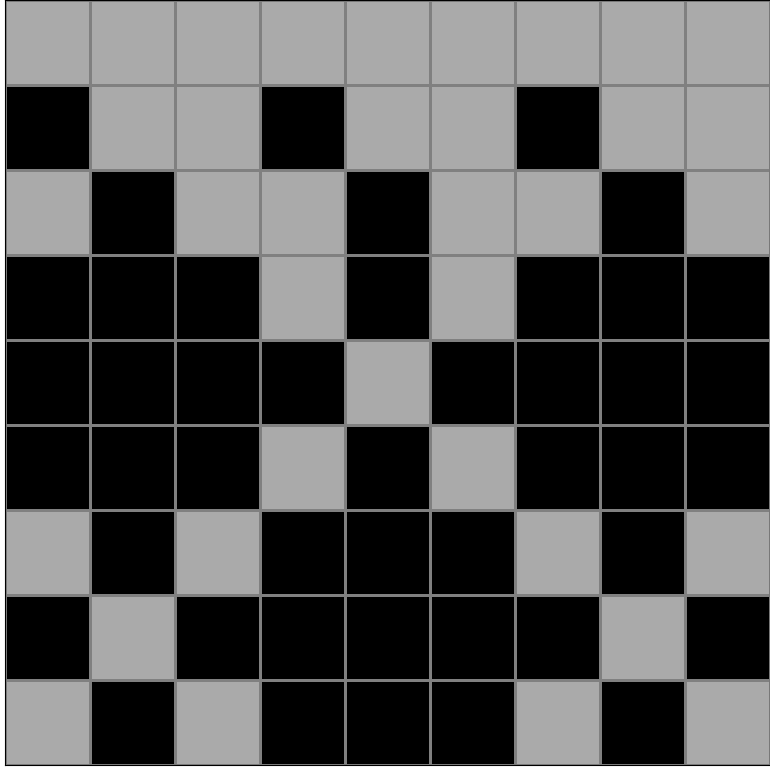
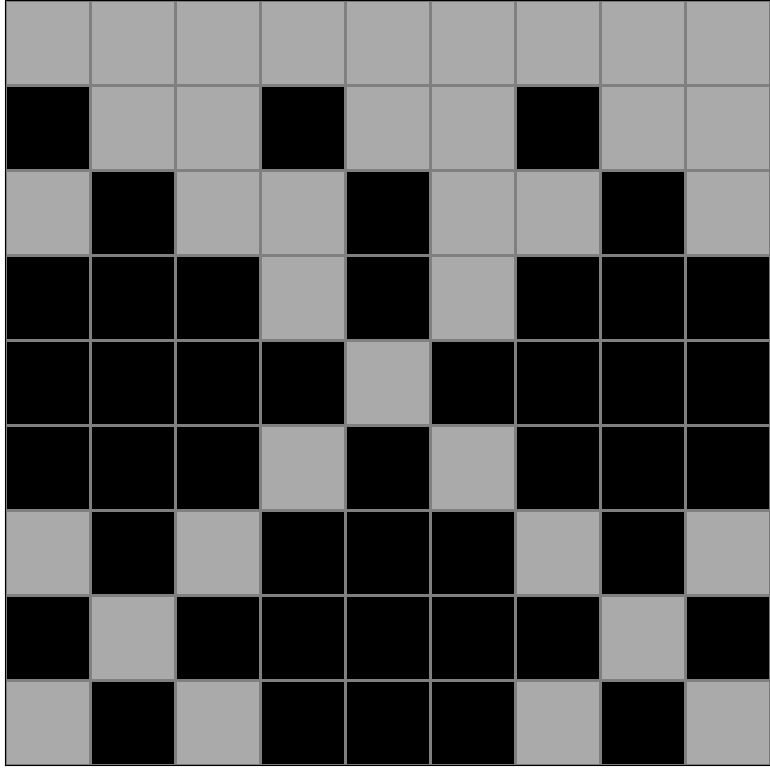
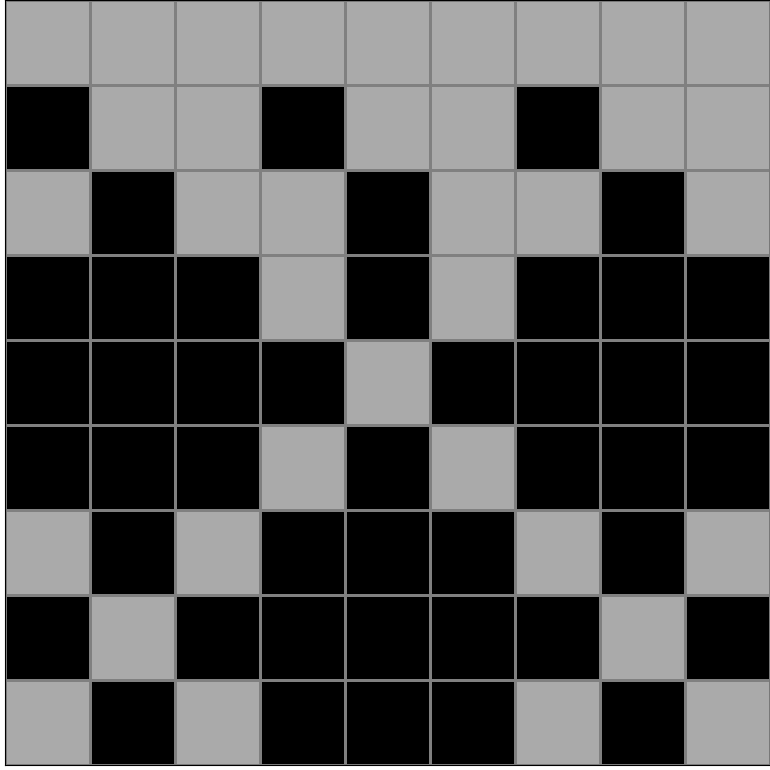
Participant 5
Initial description: I thought the examples were reverse as the input.
Final description: I was trying to invert some of the colors, but still keep the pattern.
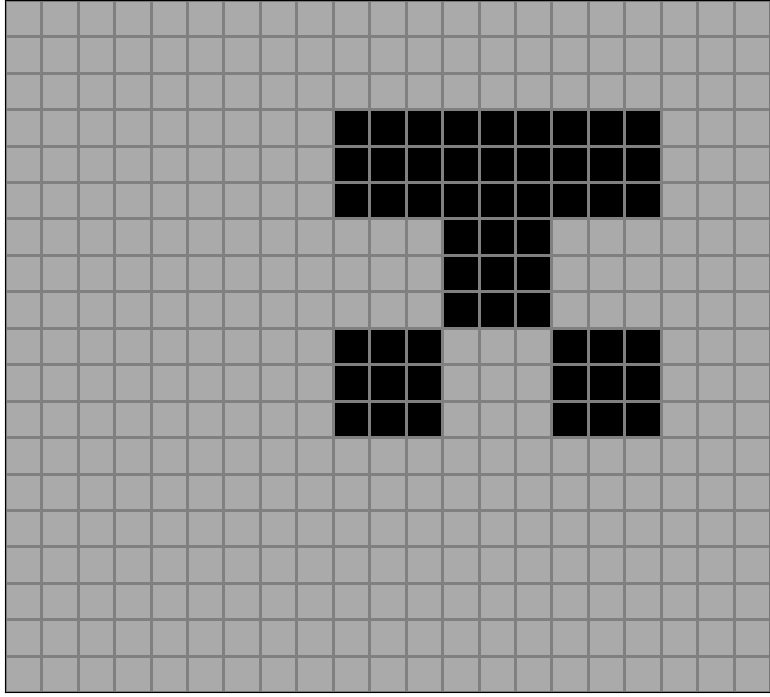
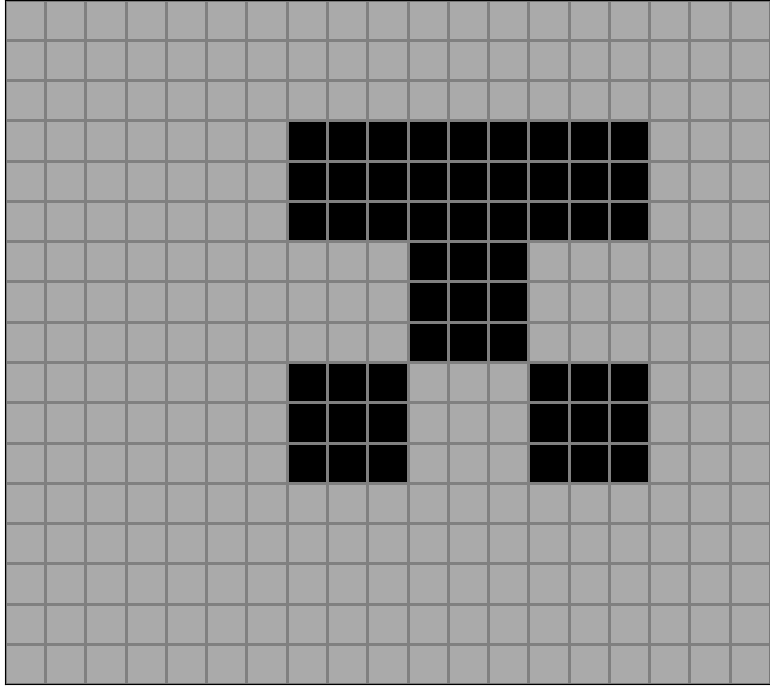

Participant 6
Initial description: every 3 squares equals 1 in a 9x9 grid
Final description: I can't figure this one out
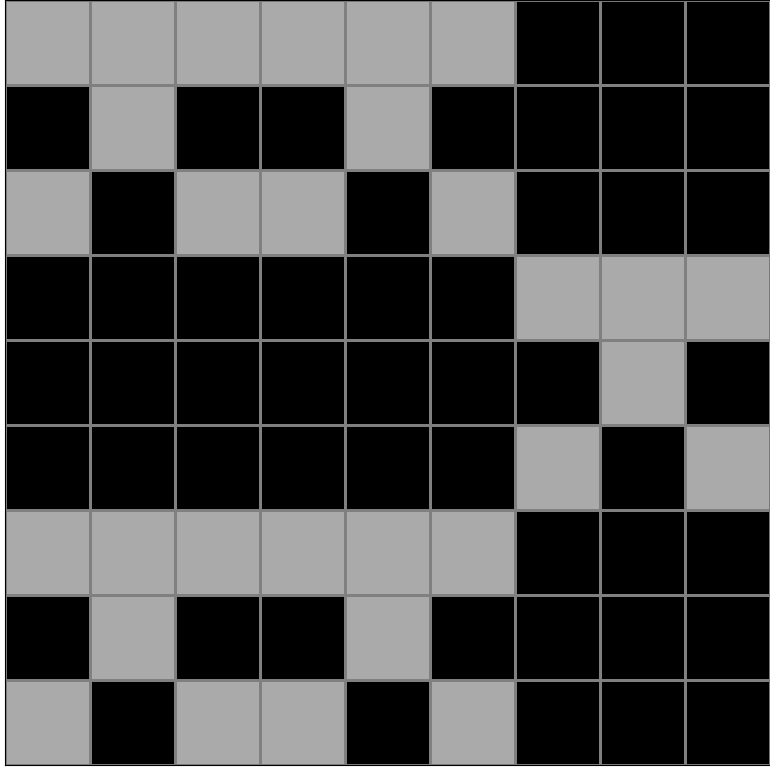

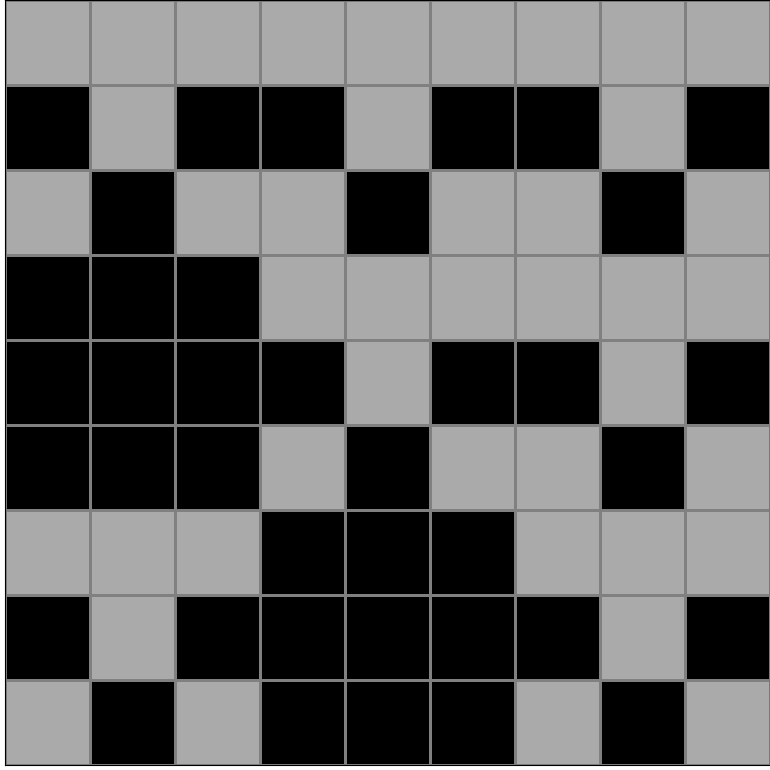
Participant 7
Initial description: Good
Final description: Good


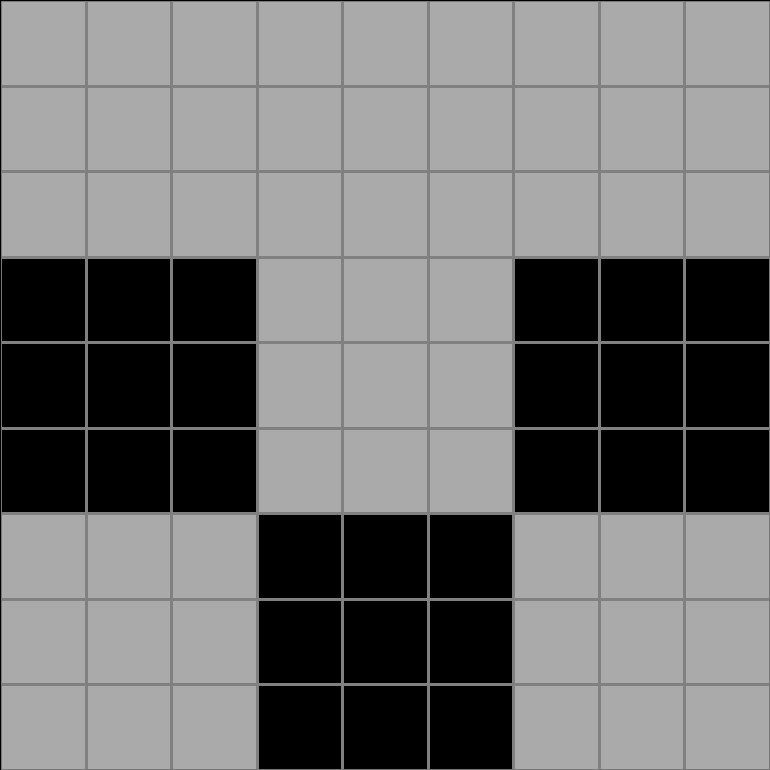
Participant 8
Initial description: well
Final description: weii
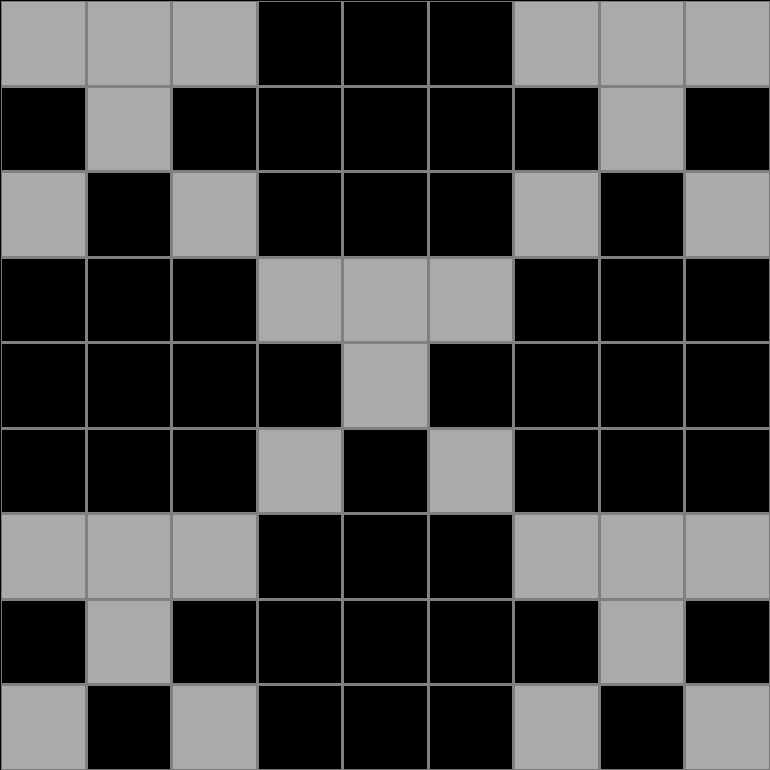
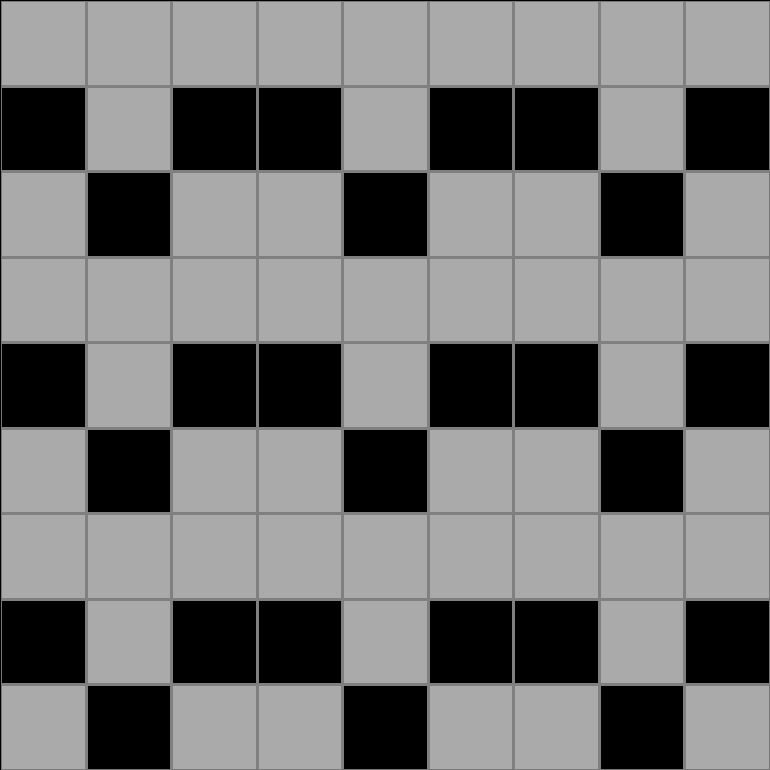
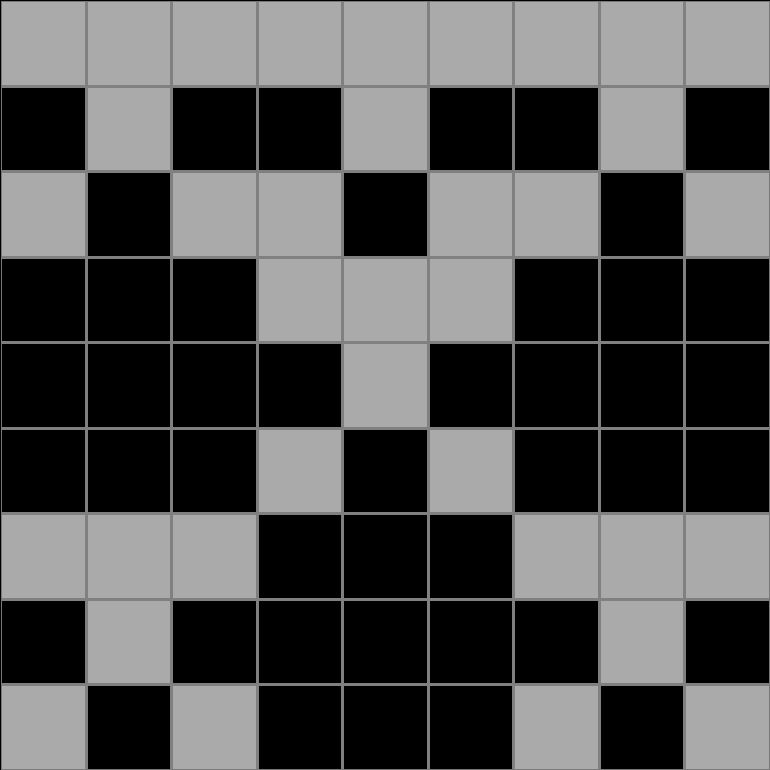
Participant 9
Initial description: The shape is copied into a 9x9 grid in the shape of the shape
Final description: The shape is copied into a 9x9 grid in the shape of the shape
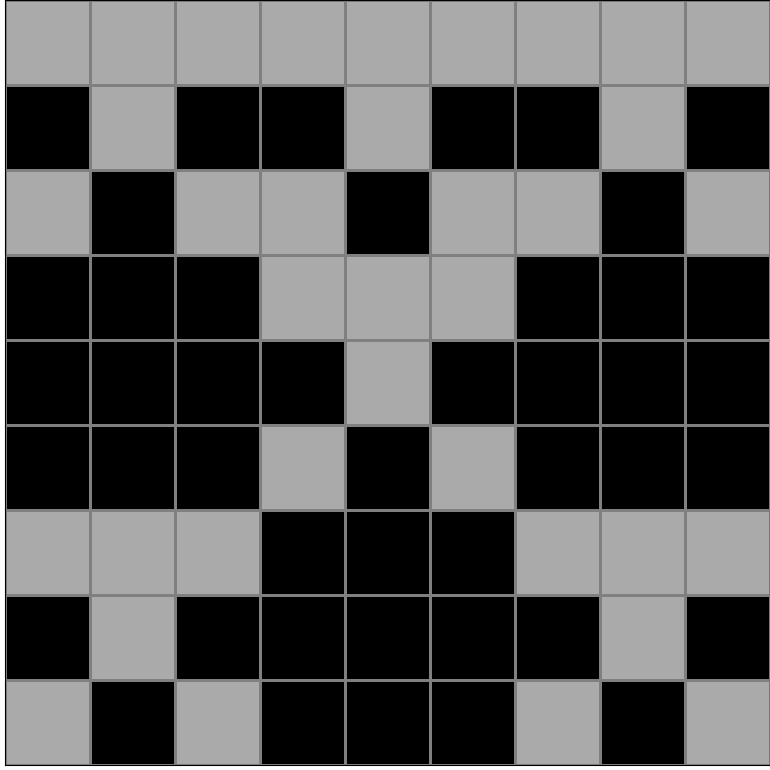
Participant 10
Initial description: I have no idea what the strategy is for this one.
Final description: I don't understand the rule to transform this task =(
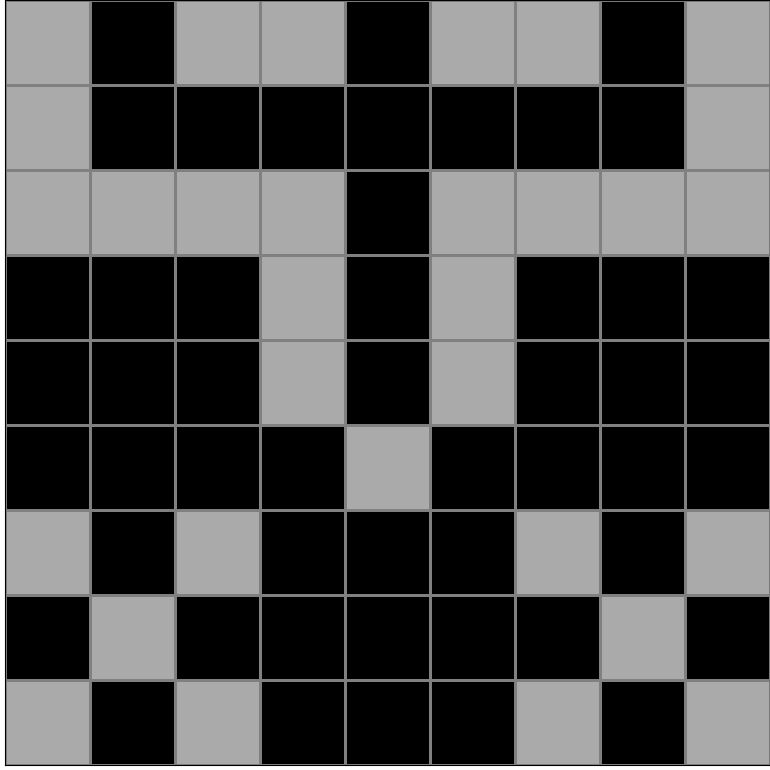


Participant 11
Initial description: It seems like it is to consistently put the open spaces in the middle of the pattern but the top half mirrors the bottom half slighty.
Final description: I thought that the black spaces between the example input were transposed to the bigger grid, in a way that wherever there was a 9x9 square that was fully blank it indicated a blank individual square on the smaller board for the test output.

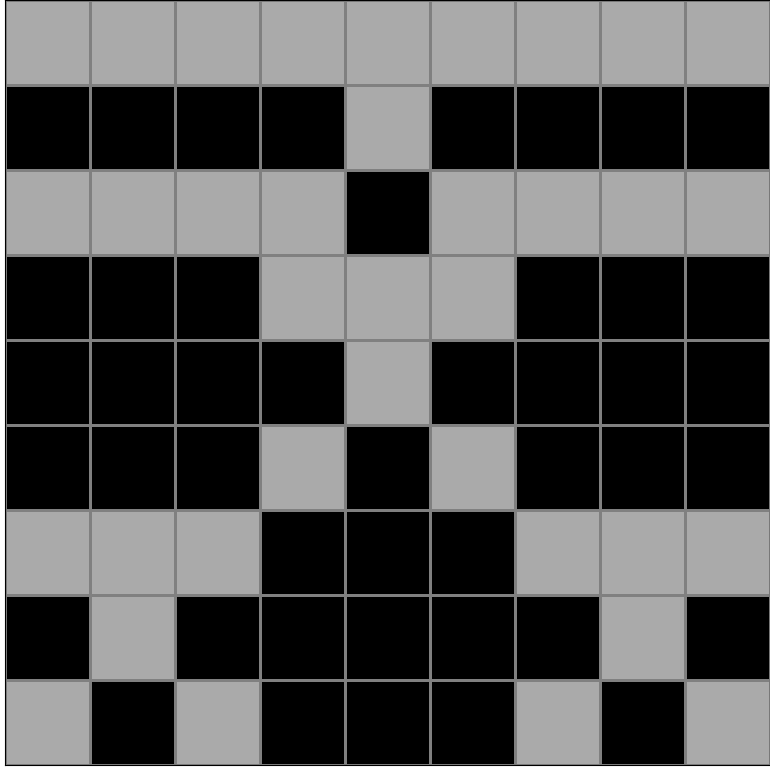
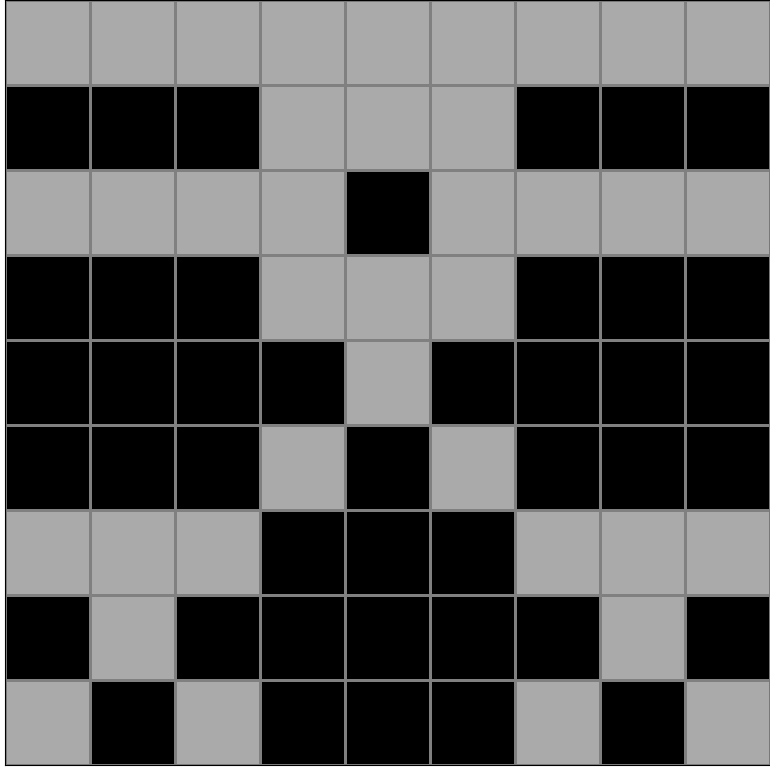
Participant 12
Initial description: good
Final description: good

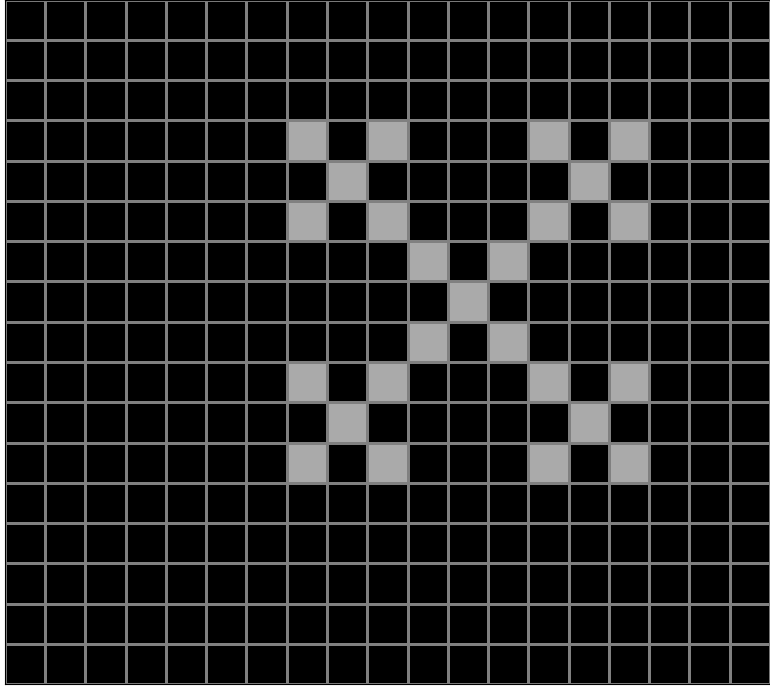
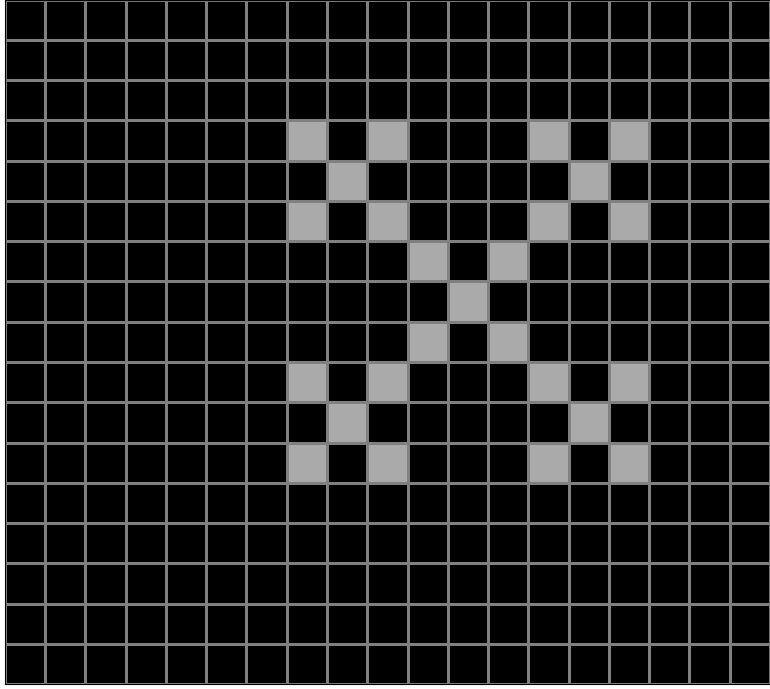
Participant 13
Initial description: I make it as in the input and examples.
Final description: I thought to color the grid one by one.
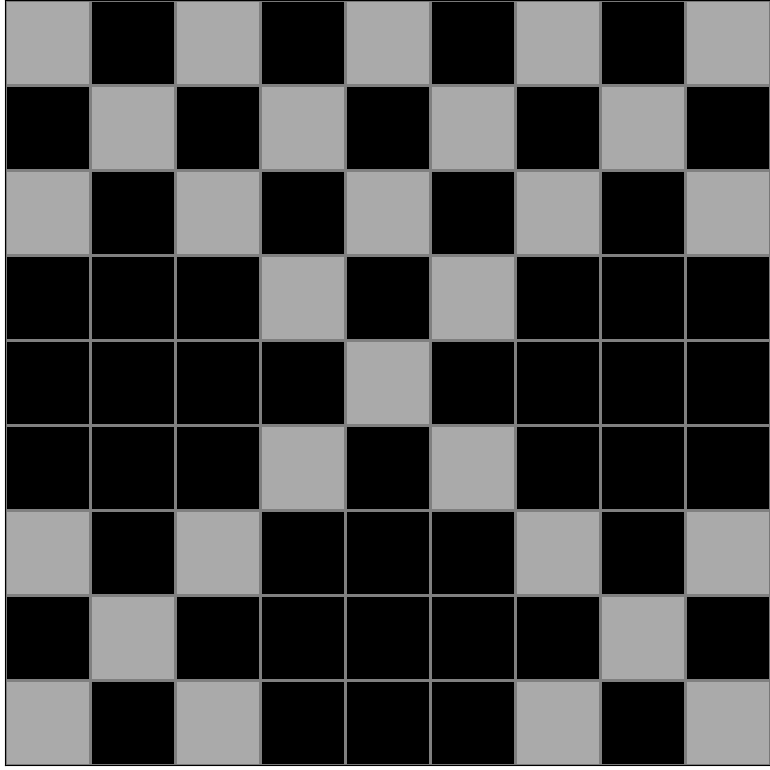
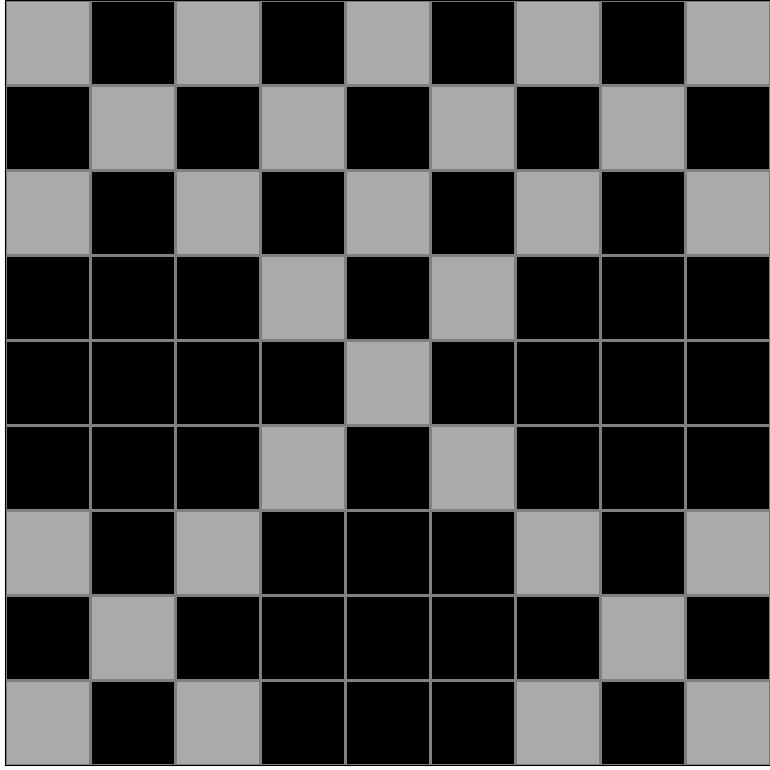

Participant 14
Initial description: really hard this round
Final description: its really hard task so i am give my best.
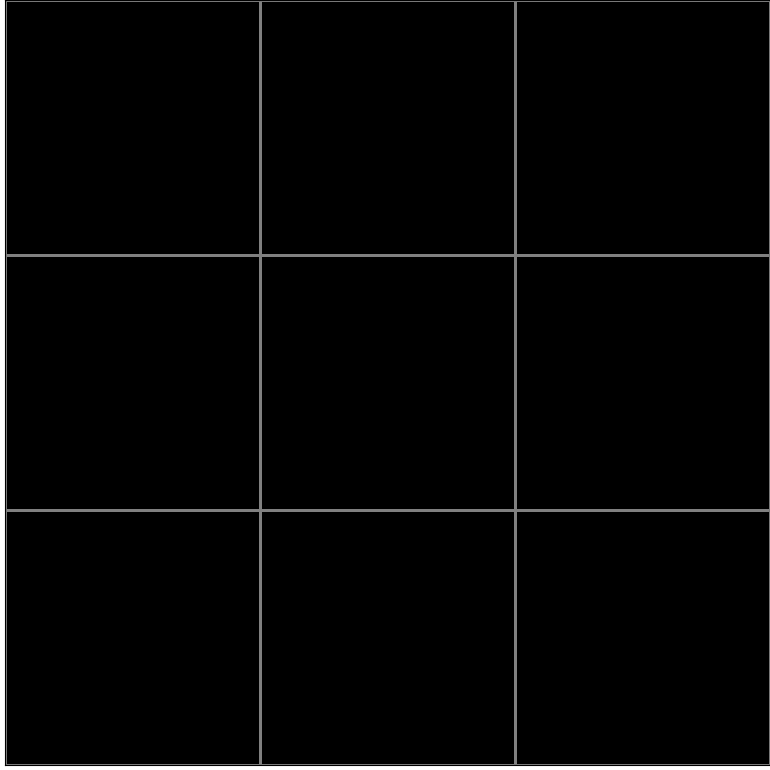
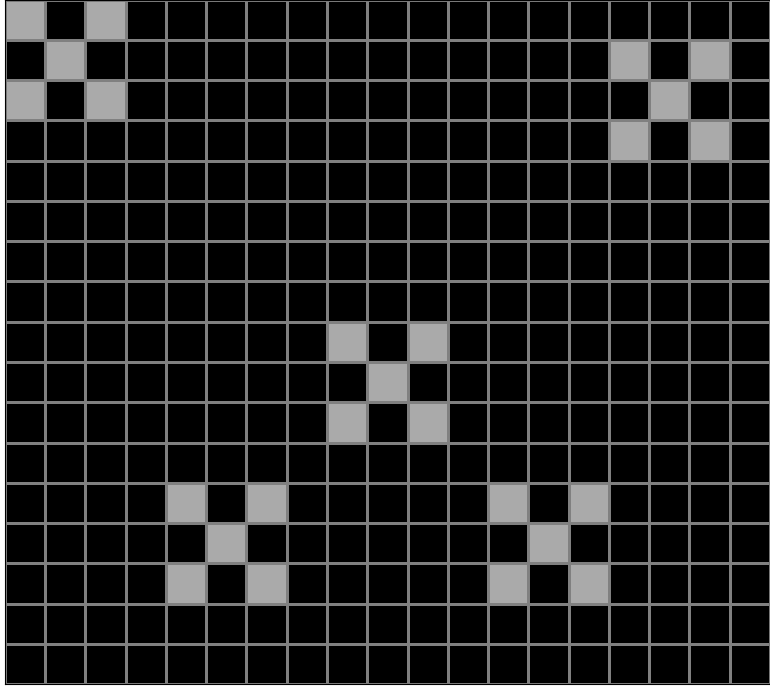
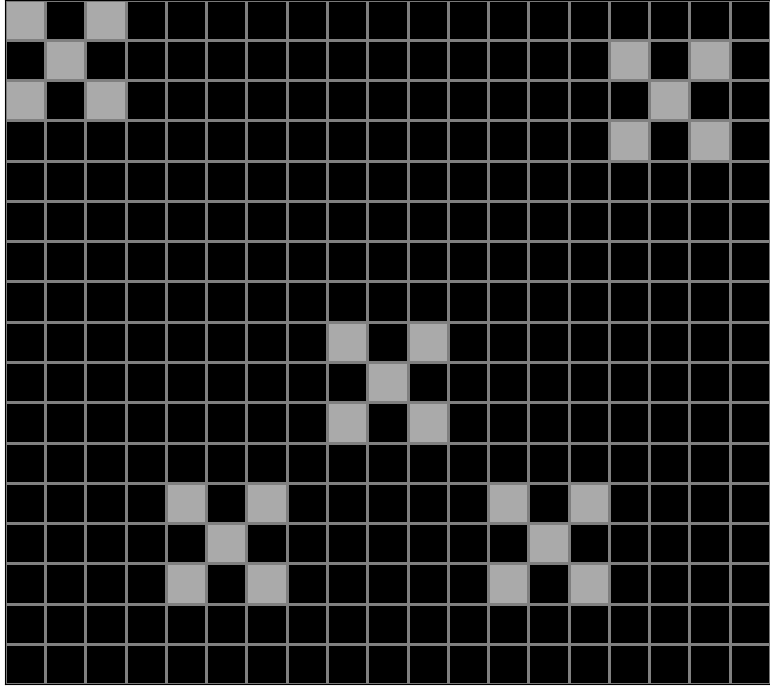
Participant 15
Initial description: From example 1 I got this output
Final description: It was very difficult
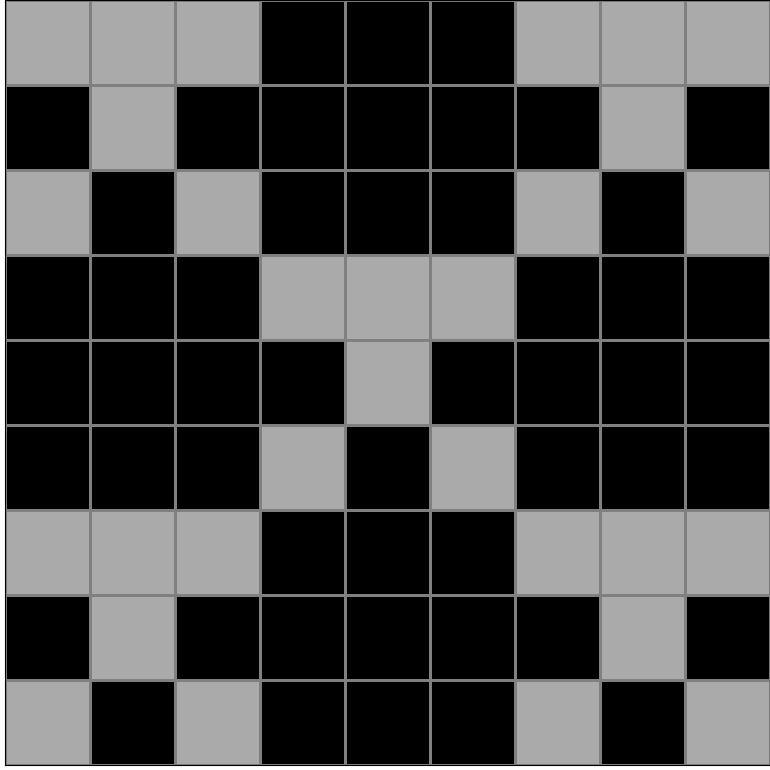

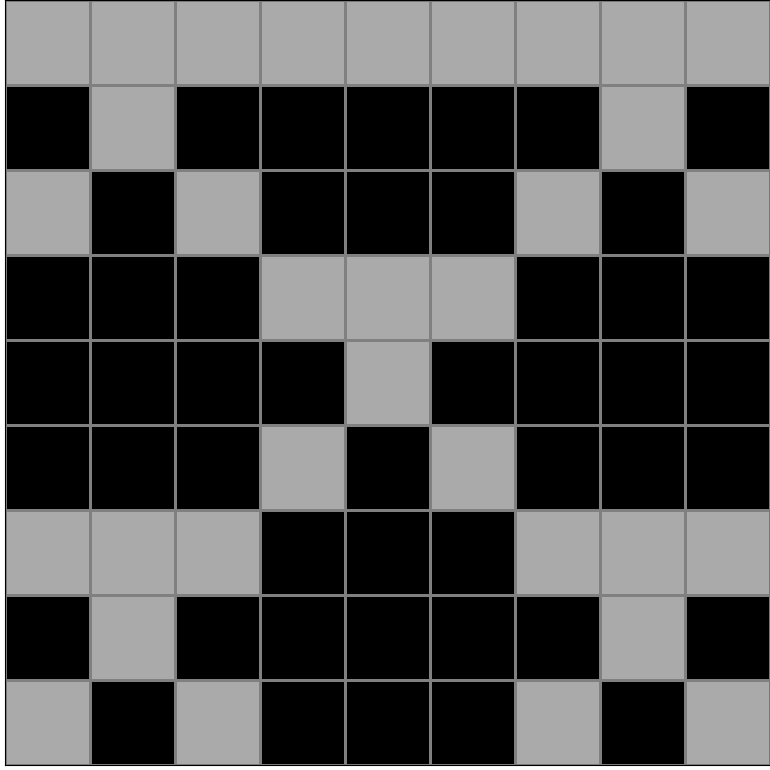
Participant 16
Initial description: I think the rule was to use the sample output that closely resembles the test input and match up the grid.
Final description: The closest shape I found with the test input was example input 1 and I was trying to copy the grid the same way.
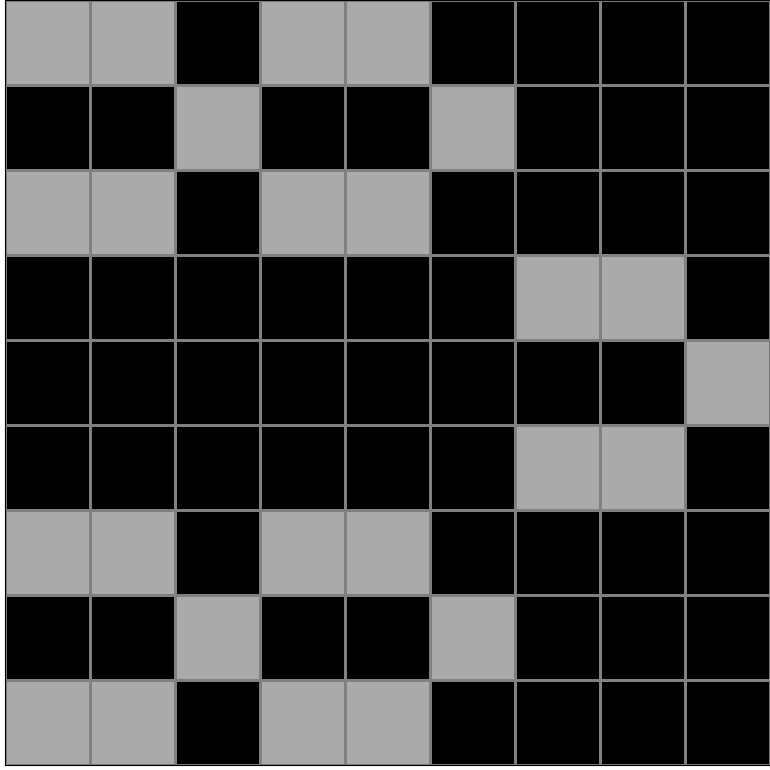

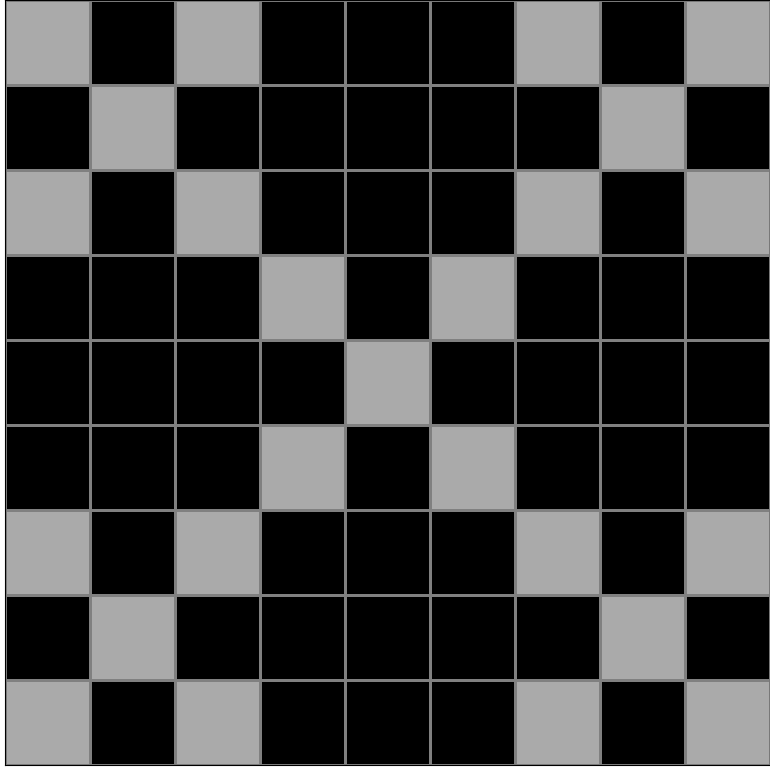
Participant 17
Initial description: To move the pattern in the middle to the corners of the board.
Final description: I thought it was to move the pattern in the middle to the corners of the board.
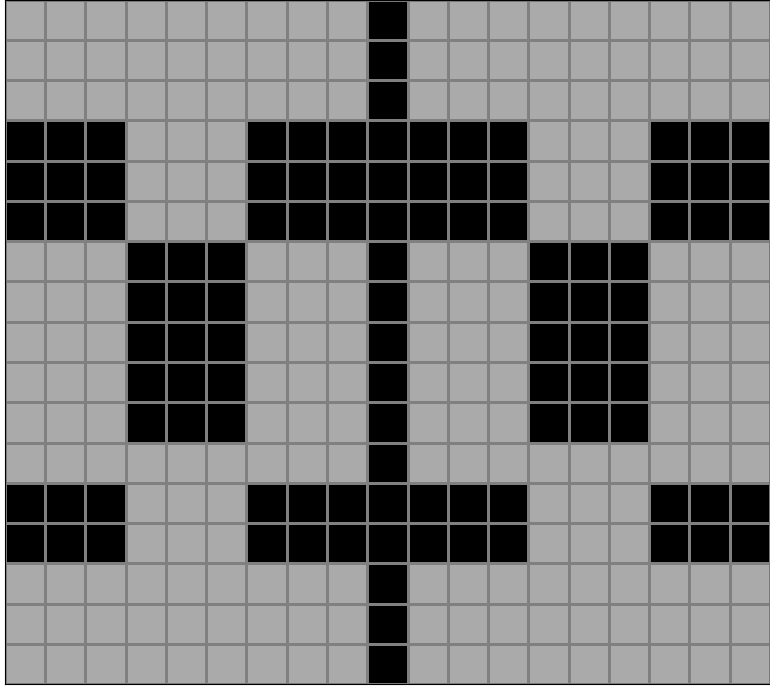

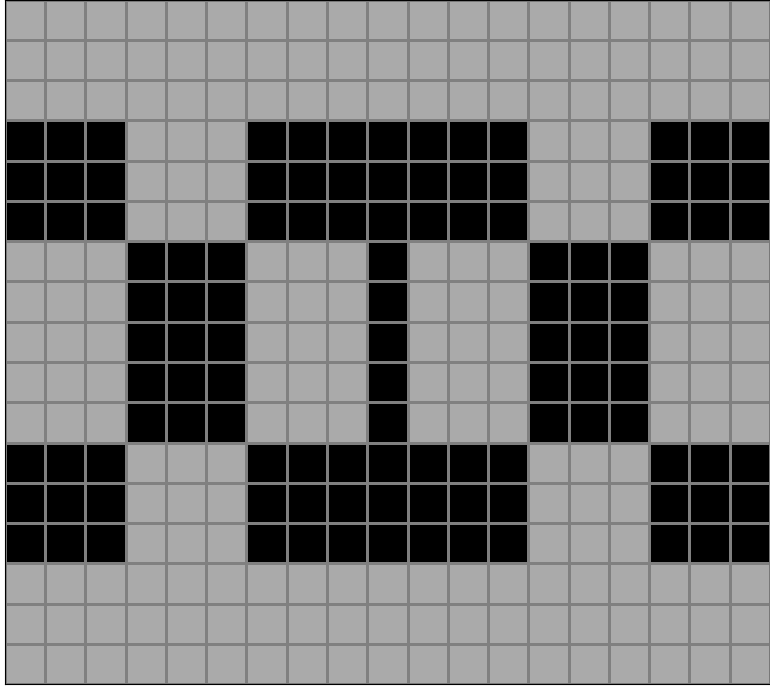
Participant 18
Initial description: Create a partially completed vertical and horizontal grey line from the enclosed grid.
Final description: I complete the test out accurately.
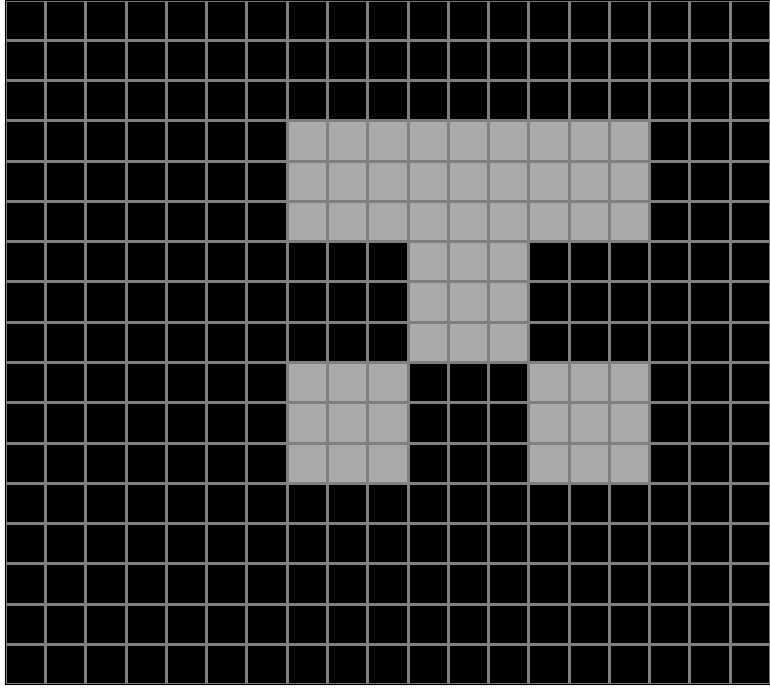
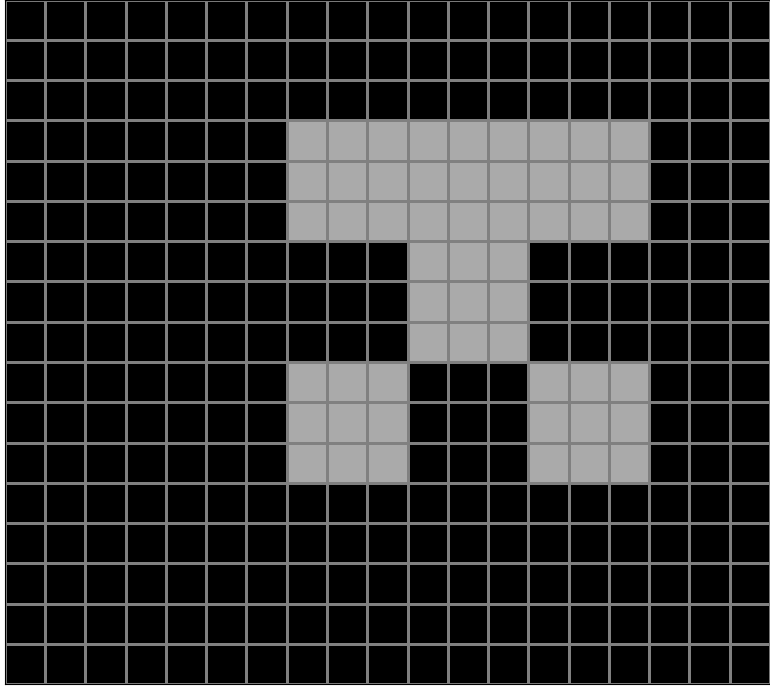

Participant 19
Initial description: Change to a 9x9 grid--each 9 block square becomes one block, repeat the pattern as long as it fits
Final description: Convert to a 9x9 grid. Recreate the 1st image on a large scale by filling in 3x3 grids with a smaller representation of the image--Each 3x3 grid on image 1 is equal to one block on image 2
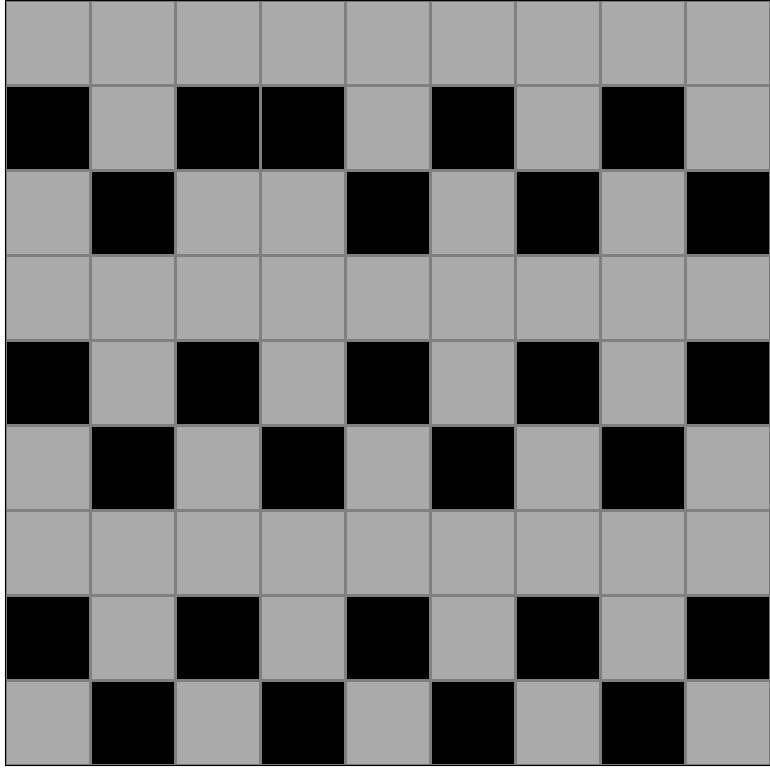
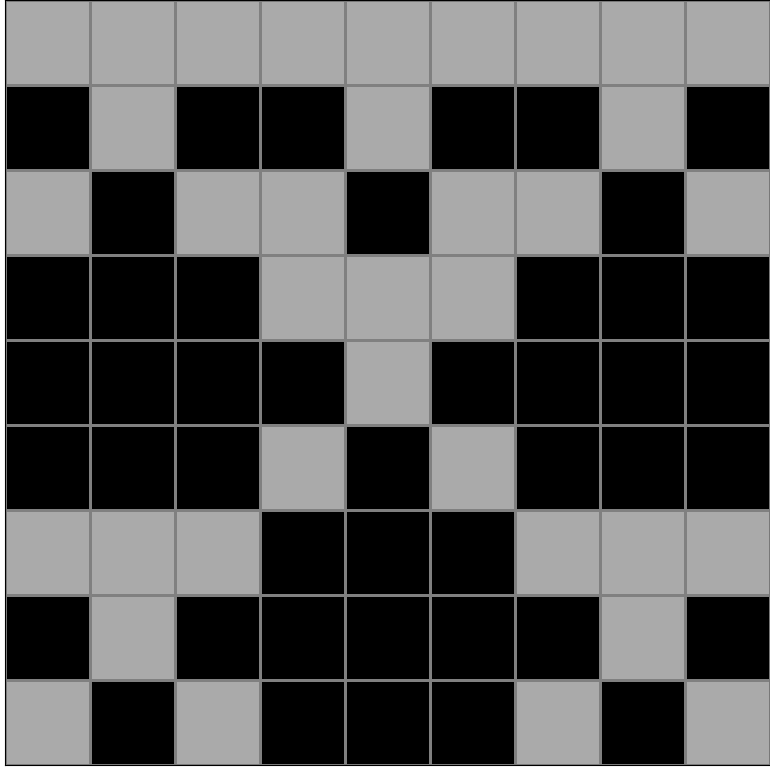
Participant 20
Initial description: The idea for this puzzle is to take the input image and to form it in such a way that the entire canvas is filled with the main puzzle, configured with smaller versions of the overall object that is displayed.
Final description: The idea for this puzzle is to take the input image and to form it in such a way that the entire canvas is filled with the main puzzle, configured with smaller versions of the overall object that is displayed.
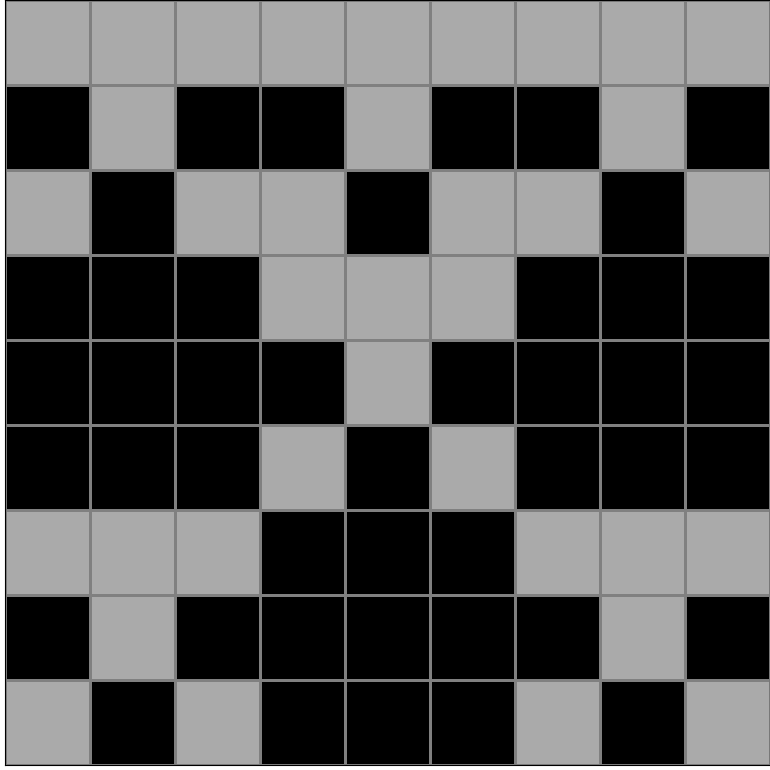
Participant 21
Initial description: The object makes a 9x9 representation of the input that is made up of 3x3 versions of the input.
Final description: The object makes a 9x9 representation of the input that is made up of 3x3 versions of the input.
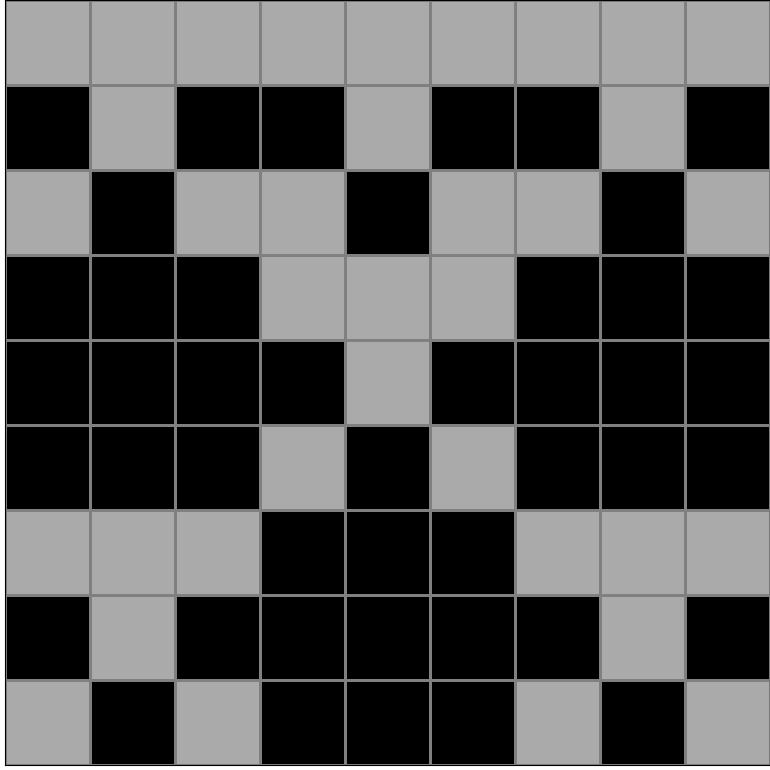
Participant 22
Initial description: Create a 9x9 grid. Recreate the original pattern as one large pattern similar to the input made up of smaller patterns similar to the input. A large pattern matching the original will fill in the 9x9 grid, but each section of the new pattern will also be a mini representation of the input pattern - each 3x3 portion will make up one tile of the new grid.
Final description: Create a 9x9 grid. Recreate the original pattern as one large pattern similar to the input made up of smaller patterns similar to the input. A large pattern matching the original will fill in the 9x9 grid, but each section of the new pattern will also be a mini representation of the input pattern - each 3x3 portion will make up one tile of the new grid.
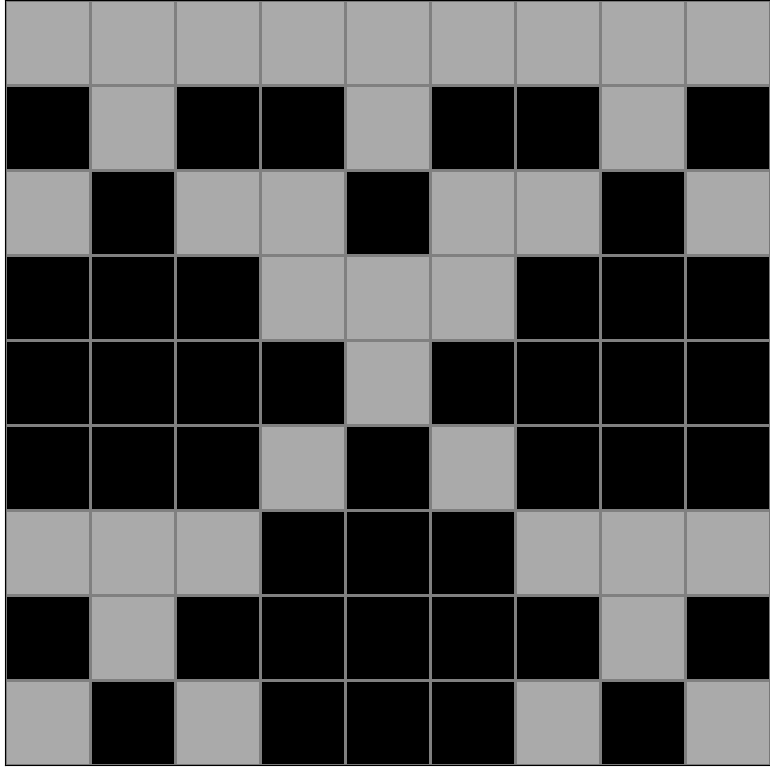
Participant 23
Initial description: Make the output size half of the input. For the output, 1 square equals 3 squares for the input. Copy the shape to the top left, and repeat the shape in a checkerboard pattern.
Final description: Make the output size half of the input. For the output, 1 square equals 3 squares for the input. Copy the shape to the top left, and repeat the shape depending on where the original shape was located on the input.
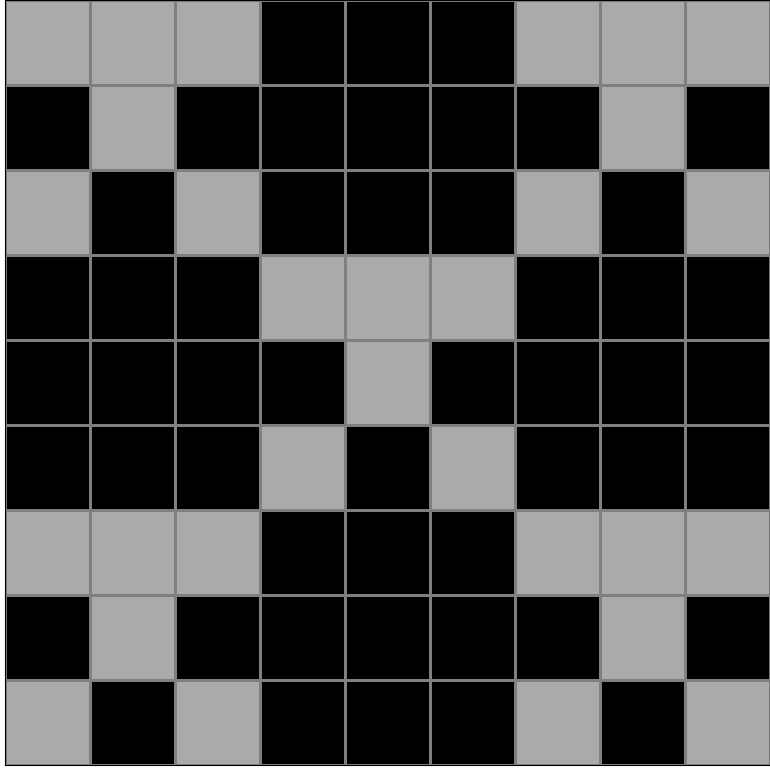
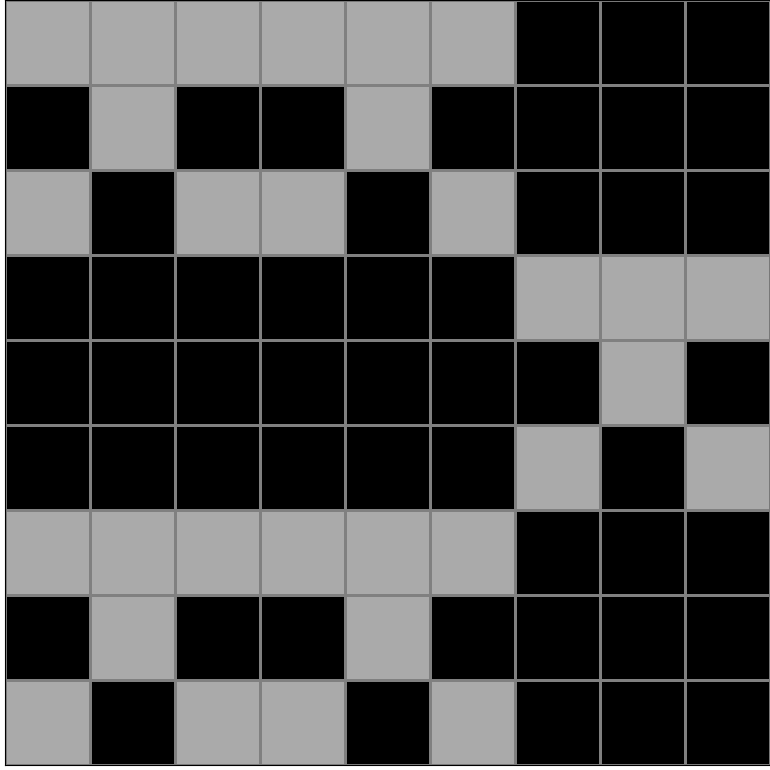

Participant 24
Initial description: Example Input pattern is shrank down so 3x3 pixels equals 1 pixel. Then it is placed centered on the side which is "heaviest", heaviest meaning the side not symmetrical to the others. The pattern is then repeated.
Final description: Example Input pattern is shrank down so 3x3 pixels equals 1 pixel. Then it is placed centered on the side which is "heaviest", heaviest meaning the side not symmetrical to the others. The pattern is then repeated.


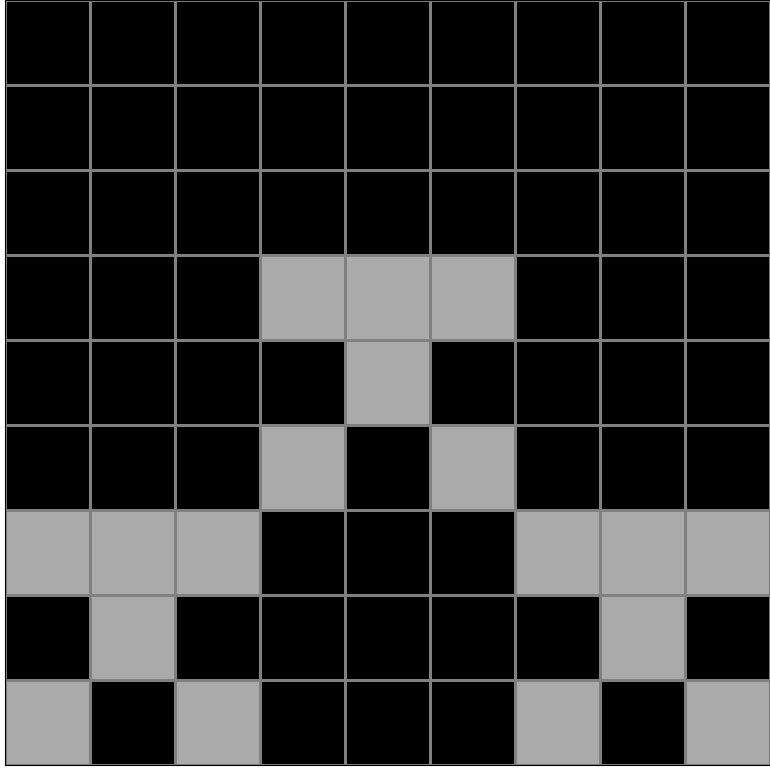
Participant 25
Initial description: Expand gray cells to fill up to edges of a 9x9 grid. Color in black every other cell for 3x3 gray blocks within the pattern. For 6x3 gray blocks within the pattern, fill in black every 3rd cell in the first row and last row, and fill in the opposite colors for the middle row. For 9x3 gray blocks within the pattern, leave the first row all gray. For the second row, fill the first cell and every third cell in black. For the third row, fill in black the cells to the bottom left of the black cells in the second row.
Final description: Expand pattern to edges of a 9x9 grid. Fill in black cells to make a T-shape lying on it's side to the right with the exception of the top middle cell.
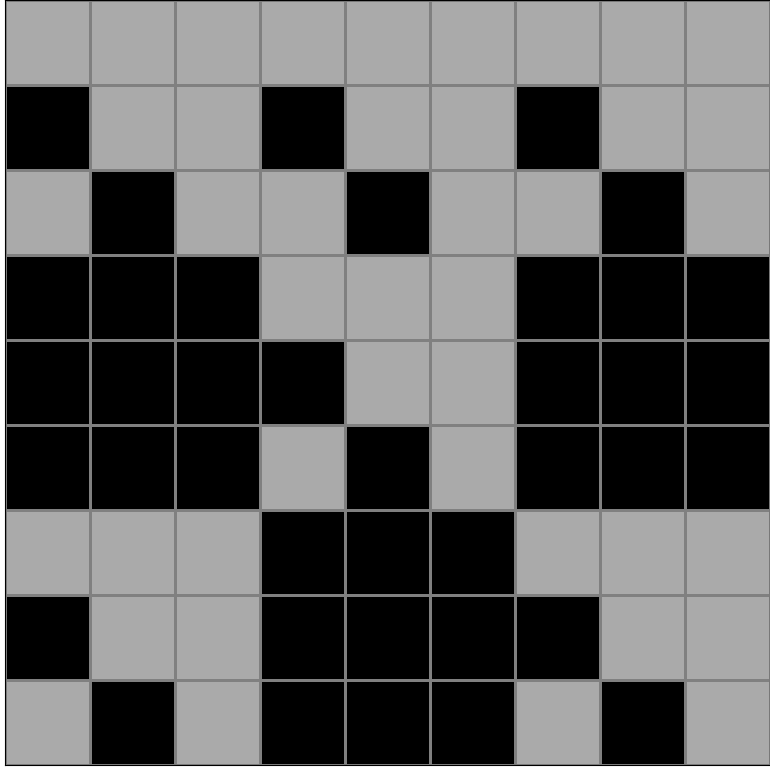


Participant 26
Initial description: Each three squares in the original pattern equal one square in the output. The pattern with less squares is arranged in a pattern.
Final description: The test pattern squares equal one output pattern square.
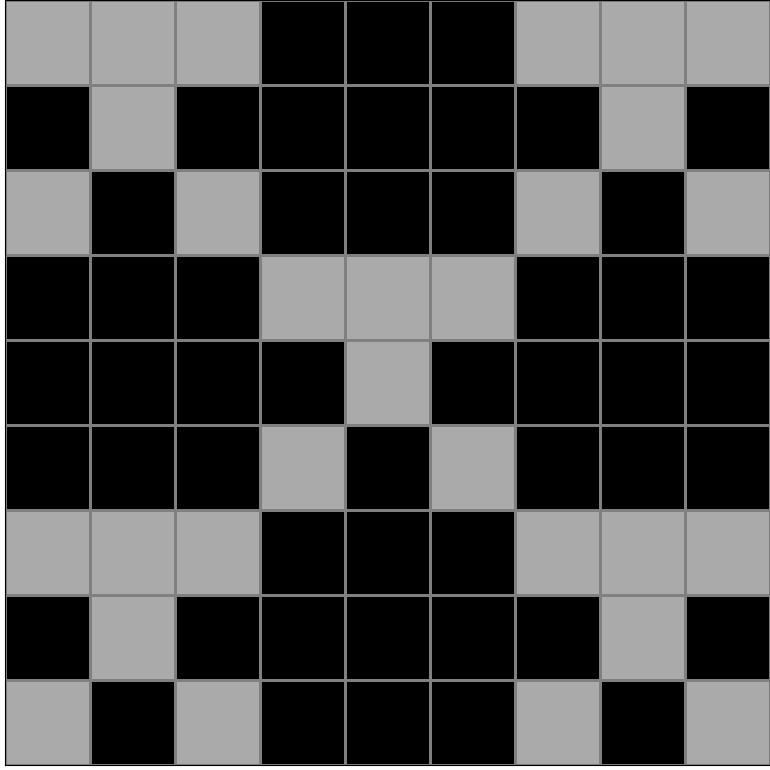
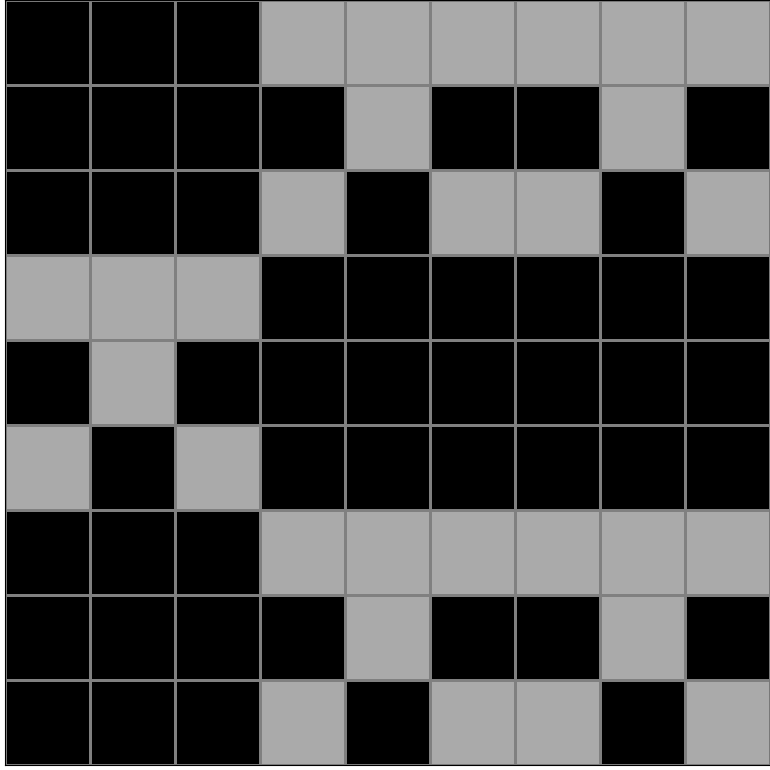
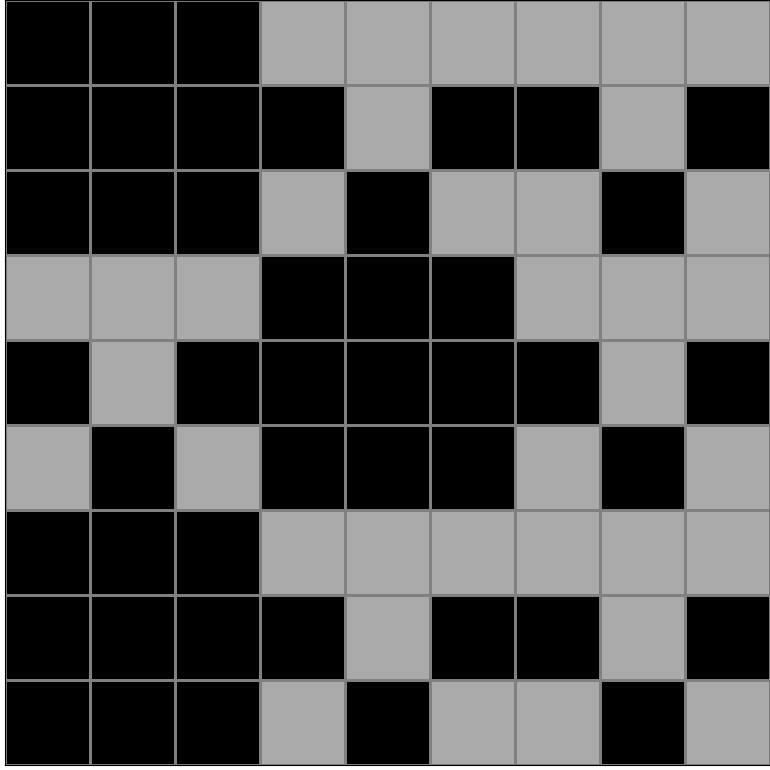
Participant 27
Initial description: very nice.
Final description: very nice.
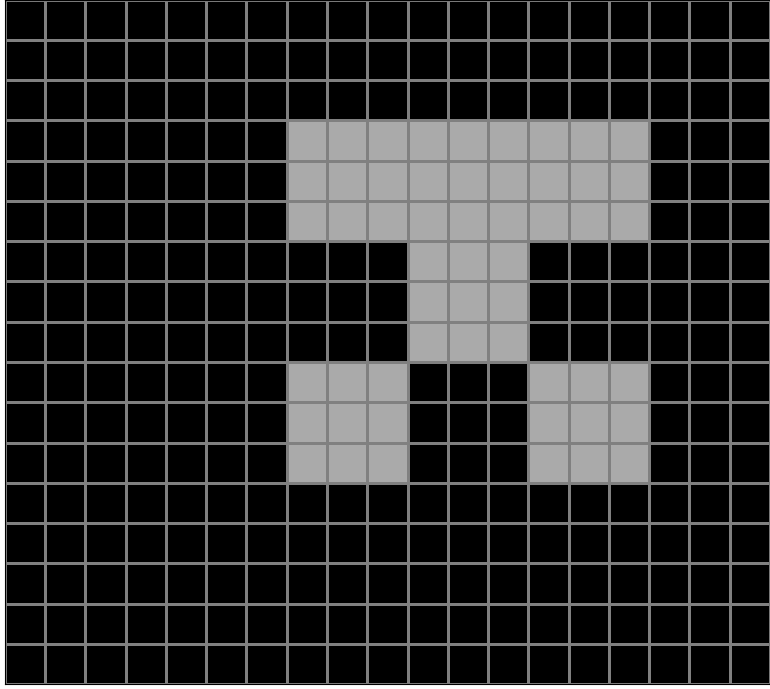

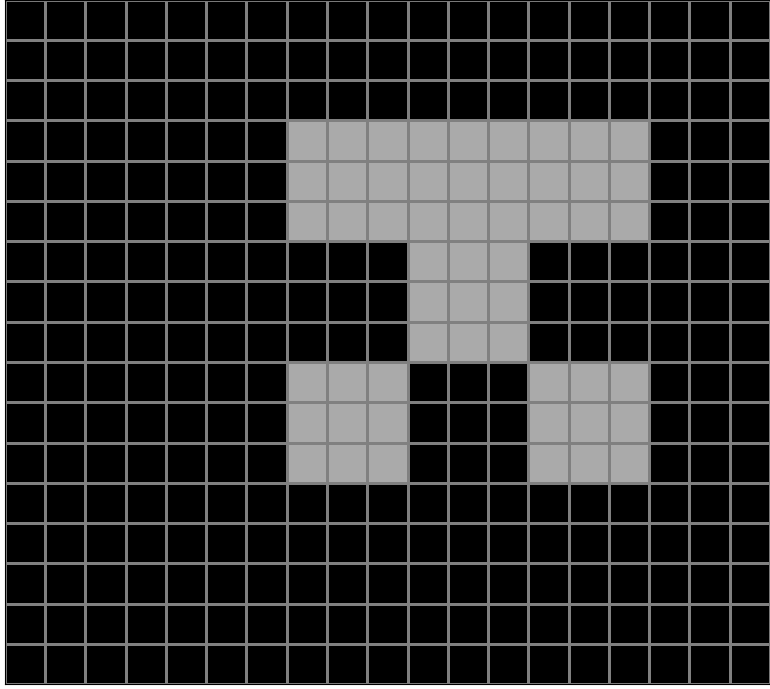
Participant 28
Initial description: The image is transposed to a checkboard pattern on a 9x9 grid.
Final description: The image is some kind of checkerboard transformation to a 9x9 grid. I'm not sure of the complete rule.
